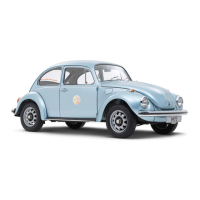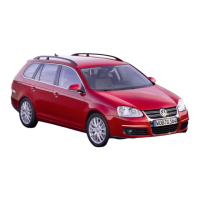Winter
operation
Do not,
under any circumstances, try to in-
fluence the heating
of
the vehicle by covering
uo the slots
below the rear window. These
slots must always
be
clear so that
air can
flow in to the carburetor and
to
the
engine
cooling
fang.
Tires
with badly worn
treads are very
danger-
ous
particularly
in
the winter so ensure
that
they
are replaced in
good
time. Winter tires
are no
longer fully effective
when the tread
has worn
down to a deoth of 4 mm.
M +
S
tires with
special
heavy treads
give
good
roadholding
in snow and slush.
Better
still are
M
* S
tires with studs
which
increase
the
safety
margin even on
hard
snow
and
ice.
Winter tires should alwavs
be fitted
on
all four
wheels.
Even
when
fitting winter tires, the specified
carcass
strength
must be adhered to. Always
note the
PR details on
the
tire walls
when
buying winter
tires.
The soecif
ic characteristics of winter
tires can
be improved
by raising the
tire
pressures
to
0.2
kg/cmz
(3
psi)
above the normal operating
pressure
for the tire
concerned.
This
inflation
pressure
then covers
ihe recommended
pressure
increase of 3
psi
for fast highway
driving.
M + S tires with studs should
be run
at moderate
speeds when
new in
order
to
give
the studs
time to settle.
38
In
general,
winter
tires
only
have real
advantages
when conditions
on
the road are
really wintry. For
safety reasons, it is not
advisable
to drive
a vehicle fitted with any
type of
winter tire at
top
speed. You cannot
expect a
winter tire to
have
the same degree
of adhesion on
dry,
wet
or snow-free
roads
as a normal
tire. Furthermore, under these
conditions
M
+
S
tires
wear
rapidly,
pariicularly
at high speeds.
Radial
ply
tires are also
good
in winter
condi-
tions. lf conditions
are
not
too severe these
tires can be
fitted
instead
of M * S
tires.
M + S and M * S
studded tires of
the radial
ply
type have
the very best characteristics
for
winter use. The oressure
increase of 0.2
kg/cm2
(3
psi)
recommended
for normal
winter tires
is also applicable
to radial
ply
winter
tires.
Snow
chains: Only
thin chains which do not
stand clear
of the tire
tread
and
inner
side
wall
more than
15 mm including tensioner, are
suitable.
The chains offered
as
VW
accessories
are
of
this type.
Contrary
to
wintertires,
snow chains
are usually only
fitted on
the
driving
wheels.
lf, in exceptional cases,
it is necessary to fit
chains on
the f ront wheels
as well, the
steering
should not
be locked hard
over as
otherwise
the
chains may rub
on
the
stabilizer.
This
applies
particularly
when
chains are fitted
on
winter tires.
When driving
over long
stretches
of road which
are free
of snow, the
chains
should be removed.
They
serve
no
useful
pur-
pose
here but merely
damage the
tires and
wear
out ouicklv.
Engine oil of SAE 30
grade
will tend
to
thicken
at
temperatures
around freezing
point
and
may
cause
difficult starting. As soon as
winter temperatures are expected, change
over
in
good
time to a thinner
grade
of
engine
oil.
Details
of
the various oils to be used are
given
on
page
60.
lf
you
only drive mainly short distances and
in
city traffic
in the winter we recommend that
you
have
the engine oil changed
at 2500 km
(1500
miles)
intervals.
Should
you
only
drive
a few hundred miles a month under these con-
ditions,
it is advisable to have the oil
changed
every 6 to B
weeks. At
other
times these
additional changes are unnecessary and un-
economical.
In areas with arctic climates
and temperatures
below about
-25"
C
(-13"
F) the
engine oil
should
be changed every 1250
km
(750
miles).

